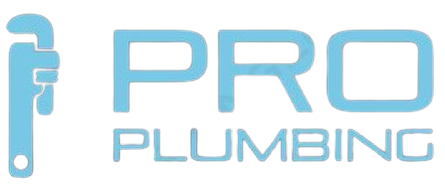Introduction:
The annoying sounds of dripping water, no hot water for the shower, and unstoppable running water in the toilet upon flushing are all common and frustrating plumbing issues that homeowners face. The problem with many plumbing issues is that they can go unnoticed for a long time, and when they are discovered, the damage can be severe, and the repair costs can be significant. So how do we avoid this? In this article, we will learn about the most common plumbing issues any homeowner should be aware of, along with how to try to fix these problems yourself or when it’s time to call a plumber.
Homeowner’s Headache: The Most Common Plumbing Issues
Just cleaning the floors and washing the dishes is not enough for maintaining a smooth-running household. The most important aspect of your home that often gets ignored is the plumbing system. Many of the plumbing issues are common, which can turn into a disaster if you don’t treat them in a timely manner.
Let’s learn about the most common plumbing issues that have been causing headaches for homeowners:
- Leaky Faucets
High water waste, which leads to high water bills and environmental damage, is the most common plumbing issue that is caused by leaky faucets. A leaky faucet can cause water wastage of over 3,000 gallons of water annually. Timely addressing these issues is important for maintaining a healthy environment at home.
- Burst Pipes
Burst pipes are severe plumbing emergencies, causing extensive water damage. They are caused by freezing temperatures, corrosion, high water pressure, and physical damage from construction or landscaping work. They require immediate attention and can cause extensive damage.
- Clogged Drains
Clogged drains are common plumbing issues faced by homeowners, affecting sinks, showers, bathtubs, and toilets. Common causes include hair and soap scum in bathrooms, food particles and grease in kitchens, foreign objects flushed down toilets, and tree roots infiltrating outdoor sewer lines.
- Broken Water Heater
A broken water heater can cause significant damage to your daily life and can turn into a more serious issue if you leave it unattended. The most common signs of water heater malfunction are inconsistent hot water, weird tank noises, extremely cold water, rusty or discolored water, and leaks around the heater.
- Overflowing Toilets
Overflowing toilets can cause a dirty mess and unsanitary issues. The most common causes of overflowing toilets are clogged bowls, drainpipe issues, flush system issues, septic system issues, and blockages in the sewer line. Understanding and addressing these plumbing issues can help you overcome the damage.
- Low Water Pressure
If the flow of water is trickling rather than smoothly flowing from your taps or showerheads, then you may be experiencing a low water pressure issue. A broken pressure regulator, clogs, or hidden leaks are the major causes of low water pressure. It is often a warning sign of severe plumbing issues, so it is important to immediately address them.
- Not Working Sump Pump
A sump pump is present in the basement that collects water from the soil around the house, preventing our house from flooding and structural damage. If it fails, then water can accumulate in the sump pump and cause structural issues, which is why you should use waterproofing material during sump pump installation.
How to Prevent the Most Common Problems in Plumbing
Preventing common problems in plumbing is often easier and more cost-effective than dealing with emergencies. Regular plumbing maintenance is essential to keep your home’s water systems functioning efficiently and prevent significant problems.
Preventing the most common plumbing issues is often easier and more affordable than dealing with emergencies. It is important to regularly maintain your home plumbing system, making sure that there are no leaky faucets or clogs in the pipes. This ensures efficient functionality and prevents significant problems.
Here are some proactive steps you can take for the longevity of your plumbing system:
- Regularly check visible pipes and fixtures for any leaks or signs of corrosion.
- Clean your drains every month to prevent any buildup.
- Annually flush your water heater to eliminate sediment.
- Test your home’s water pressure and make adjustments as needed.
- Don’t hesitate to call a professional plumber when required.
Conclusion
In conclusion, being aware of common residential plumbing problems can empower homeowners to take proactive measures and prevent costly repairs. Timely attention to issues such as leaky faucets, burst pipes, and clogged drains can save both water and money. Regular maintenance practices, like inspecting pipes and flushing the water heater, are essential for ensuring a well-functioning plumbing system. By staying observant of the plumbing system, homeowners can enjoy a stress-free and efficient water system in their homes!
FAQs
What are the three main types of plumbing?
It includes sanitary drainage, stormwater drainage, and potable water.
How much do common plumbing repairs cost?
The cost to repair common plumbing issues generally ranges from $150 to $500, but can be higher for more complex repairs.
How much time do common plumbing problems take?
It can range from 30 minutes to several hours or even days, depending on the complexity of the problem.
